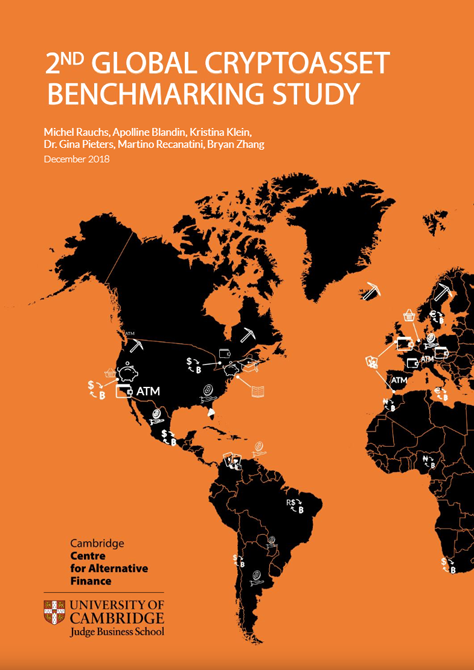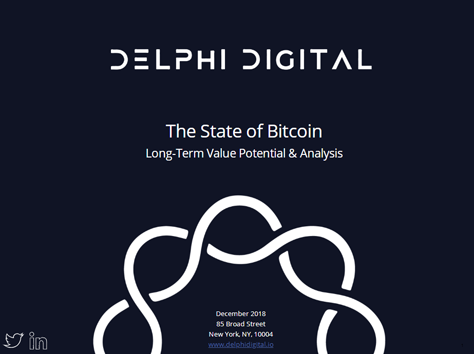Da ich selbst gerade nicht viel zum Schreiben komme, verweise ich an dieser Stelle einfach auf drei Publikationen, die ich für ausdrücklich lesens- und beachtenswert halte.
The Case for Electronic Cash. Why Private Peer-to-Peer Payments are Essential to an Open Society – Coin Center

Coin Center ist einer der wichtigsten US-amerikanischen Think Tanks, der sich kritisch-konstruktiv mit Bitcoin auseinandersetzt und dieses Wissen in Politik und Gesellschaft trägt. Dieses knackige und aktuelle Paper liest sich ganz hervorragend weg und vermittelt gleichzeitig einen wichtigen Eindruck, warum es so wichtig ist, sich mit dem Thema digitalem Bargeld auseinanderzusetzen.
Abstract
Cash is more than a method of payment. It is a fundamental tool for individual privacy and autonomy, and it is necessary for an open society. This paper shows that a cashless economy is a surveillance economy. It also argues that removing the option to freely transact without intermediation greatly limits our economic self-determination, placing our economic lives in the hands of financial institutions and governments. This paper presents several case studies demonstrating the dangers of a completely intermediated payments system and concludes that electronic cash is a tool that should not only be tolerated, but fostered and celebrated.
2nd Global Cryptoasset Benchmarking Study – Cambridge Center for Alternative Finance, University of Cambridge Judge Business School

Das Cambridge Center for Alternative Finance der University of Cambridge Judge Business School erforscht schon seit Jahren mit großem Aufwand und Akribie das Bitcoin- und Blockchain-Ökosystem und sammelt dabei Daten, die man sonst nirgendwo anders findet. Diese Studie sollte man sich daher nicht nur gut anschauen, sondern direkt runterladen. Selbst, wenn Sie schon ein paar Monate alt ist.
Highlights from the report
Millions of new users have entered the ecosystem, but most remain passive
Total user accounts at service providers now exceed 139 million with at least 35 million identity-verified users, the latter growing nearly 4X in 2017 and doubling again in the first three quarters of 2018. Only 38 per cent of all users can be considered active, although definitions and criteria of activity levels vary significantly across service providers.
Firms are increasingly operating across segments:
The cross-segment expansion observed in 2017 has continued: 57 per cent of cryptoasset service providers are now operating across at least two market segments to provide integrated services for their customers, compared to 31 per cent in early 2017.
Multi-coin support is rapidly expanding:
Multi-coin support has nearly doubled from 47 per cent of all service providers in 2017 to 84 per cent in 2018; a trend primarily driven by the emergence of common standards on some cryptoasset platforms (e.g. ERC-20 on Ethereum) that has resulted in a rapid increase in the supply of tokens, airdrops and forks.
The majority of identified mining facilities use some share of renewable energy sources as part of their energy mix
The study estimates that the top six proof-of-work cryptoassets collectively consume between 52 TWh and 111 TWh of electricity per year: the mid-point of the estimate (82 TWh) is the equivalent of the total energy consumed by the entire country of Belgium — but also constitutes less than 0.01 per cent of the world’s global energy production per year. A notable share of the energy consumed by these facilities is supplied by renewable energy sources in regions with excess capacity.
Mining is less concentrated than commonly perceived
Cryptoasset mining appears to be less concentrated geographically, in hashing power ownership, and in manufacturer options than commonly depicted: the mining map exhibits that hashing facilities and pool operators are distributed globally, with growing operations in the USA and Canada.
Self-regulatory efforts reflect growing industry maturity:
Industry actors are pro-actively adopting measures that appear to comply with existing regulation despite not necessarily being explicitly subject to regulations. The increasing number of self-regulatory initiatives, combined with the emergence of sophisticated and professional services, reflect the growing maturity of the industry.
The State of Bitcoin – Delphi Digital

Von Delphi Digital, hatte man zuvor nicht viel gehört, aber dieser Bericht der selbsternannten „independent research boutique providing
institutional-grade analysis on the digital asset market“ hat bei seinem Erscheinen Ende letzten Jahres breites Interesse erregt. Und retrospektiv betrachtet lagen sie mit ihrer Prognose Ende vergangenen Jahres auch nicht so falsch, wenn man sich zum Beispiel Punkt eins der folgenden Key Findings betrachtet. Seit rund zwei Monaten steigt der Bitcoin Kurs zwar langsam, aber sehr beständig.
Key Findings
- Bitcoin may face additional selling pressure in the near-term, but we believe prices will bottom in Q1 2019 based on our analysis of holder dynamics during prior boom-bust cycles.
- Lightning Network development has progressed rapidly, allowing Bitcoin to scale without sacrificing security. The success of this technology will be crucial and may prove superior to other scaling solutions in the long run.
- Total Bitcoin supply is finite at 21 million given that its inflation schedule is predefined and governed by a mathematical algorithm. The vast majority of Bitcoin have already been mined with a significant amount (~2-3 million) presumed to be lost.
Global Demand
- As global debt rises to new heights, Bitcoin can serve as a check on government institutions by offering a viable alternative to today’s reserve currencies. This is especially true of many developing market economies prone to high inflation (e.g. Venezuela, Argentina), because of weak or harmful governance. Bitcoin offers anyone with internet access the ability to transact and store wealth in a vehicle unrelated to local fiscal and monetary policies.
Value Drivers
- Bitcoin can serve as a complement to investments like gold given similar traits like scarcity, while offering unique advantages in a digital age.
- Its censorship-resistant nature provides an attractive alternative to the private offshore banking system currently estimated to hold ~$8 trillion for individuals.
- An allocation to Bitcoin can enhance risk-adjusted returns for traditional investment portfolios, but proper position sizing is crucial given its historical volatility.

Schreibe einen Kommentar